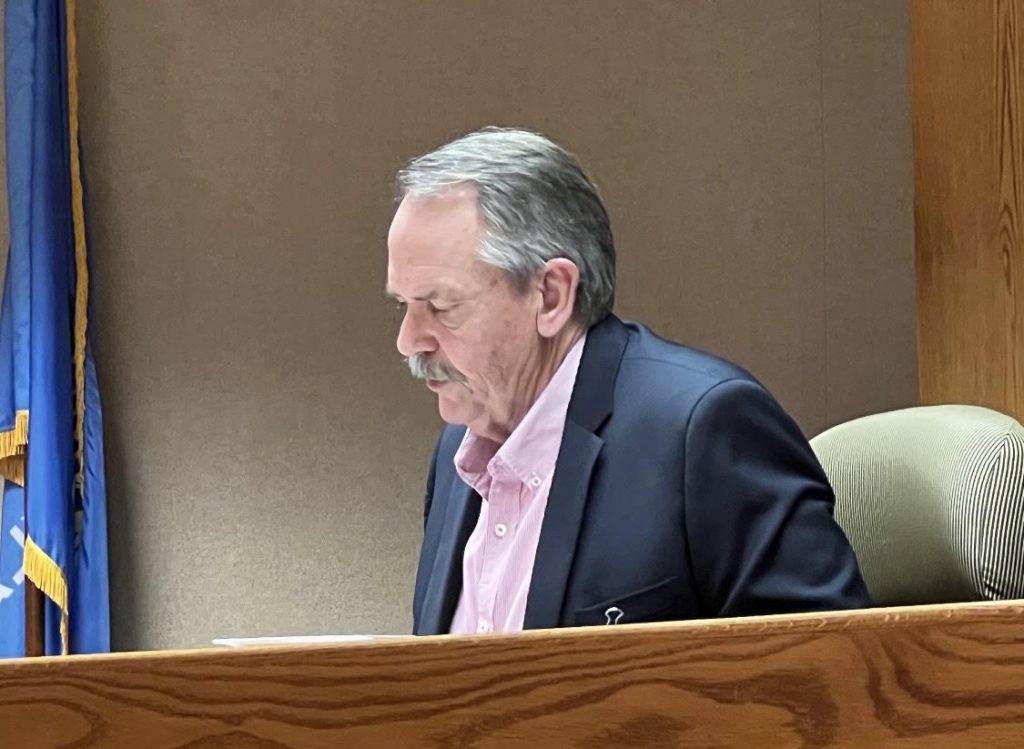
The Emergency Drought Commission met Thursday to direct all remaining funding allocated to the Commission. The Emergency Drought Commission also determined any funds unused and returned by the local conservation districts should be redirected with the remaining funds. The funding directed by the Emergency Drought Commission in Thursday’s meeting totals approximately $5 million.
At the latest meeting held on January 5, 2023, Farm Director KC Sheperd caught up with the Executive Director of the Oklahoma Conservation Commission, Trey Lam, and talked about the drought relief efforts.
The Emergency Drought Commission directed the funding to the Oklahoma Conservation Commission to distribute through the existing Emergency Drought Cost-Share Program. The funding will be dispersed by the Oklahoma Conservation Commission to conservation districts based on the number of unfunded applications in each local district.
“There was 4.5 million remaining in the drought fund, so we are going to allocate that out to conservation districts really based on the number of open applications that they had,” Lam said.
The greatest need present based on applications, Lam said, was in northeastern Oklahoma.
The top five districts for applications are Nowata, Craig, Okfuskee, Dewey, and Pittsburg counties, while the bottom five are Tulsa, Marshall, Little River, Jefferson, and Cleveland counties.
“Nowata county alone, which is a relatively small county, had over 207 applications,” Lam said.
There were over 6,000 applications, Lam said, and the program designed was for a maximum of 7500 dollars per producer.
“That is considering the high cost of drilling a water well, the high cost of cleaning out a pond- everything is so expensive that if you only give them a minimum amount of money, then it is really not helping,” Lam said. “So, we wanted it to be significant enough that it helps them get through this drought, while at the same time, it spreads it as far around the state as we could.”
Looking at the number of applications that were not funded, but are still eligible and worthy, Lam said an additional 20-30 million dollars could be spent right away on drought relief.
“Over the next couple of months, as the receipts come in and people are actually getting paid, we will have an exact number and a better idea of what the need is, but I would say there is at least another 20 million out there in need,” Lam said.
Four hundred eighty claims have already been paid, Lam said, for those producers who have already put in the work on their property and brought in the receipts to their local conservation district office.
For individuals who have called to have drought relief work completed on their property, but have been put on hold, Lam said, they can simply call their local conservation district office and let them know they need an extension on that payment as long as they can provide proof work has been scheduled to be completed.
“As those receipts come in and the producer gets back in, I should say in no more than a week, they should have money in their hands,” Lam said.
As Oklahoma is known for unpredictable weather, during the meeting, an idea was presented to work on a more permanent solution for drought relief. By having money in an emergency drought fund, ready to be used if the governor declares a state of emergency, Lam said, when the drought commission meets again, the money would be ready to allocate.
Having emergency funds on hand, Lam said, would be more ideal than having to wait for an entire legislative cycle.
“We try to make this the easiest application,” Lam said. “It is not a lot of paperwork; it is not a book worth of things or a bunch of computer entries. You come in, you pick your practice from the list, you fill out a one-page application, you go out and do the work, and if your application is chosen- and we have been doing those in most counties by random draw, simply because each person’s need was equal.”
No new applications are being accepted by local conservation districts for the Emergency Drought Cost-Share Program at this time.
All actions of the Commission are pending approval by Governor Kevin Stitt.
To see county-by-county application status for A though H, click here.
To see county by county application status for H though W, click here.















